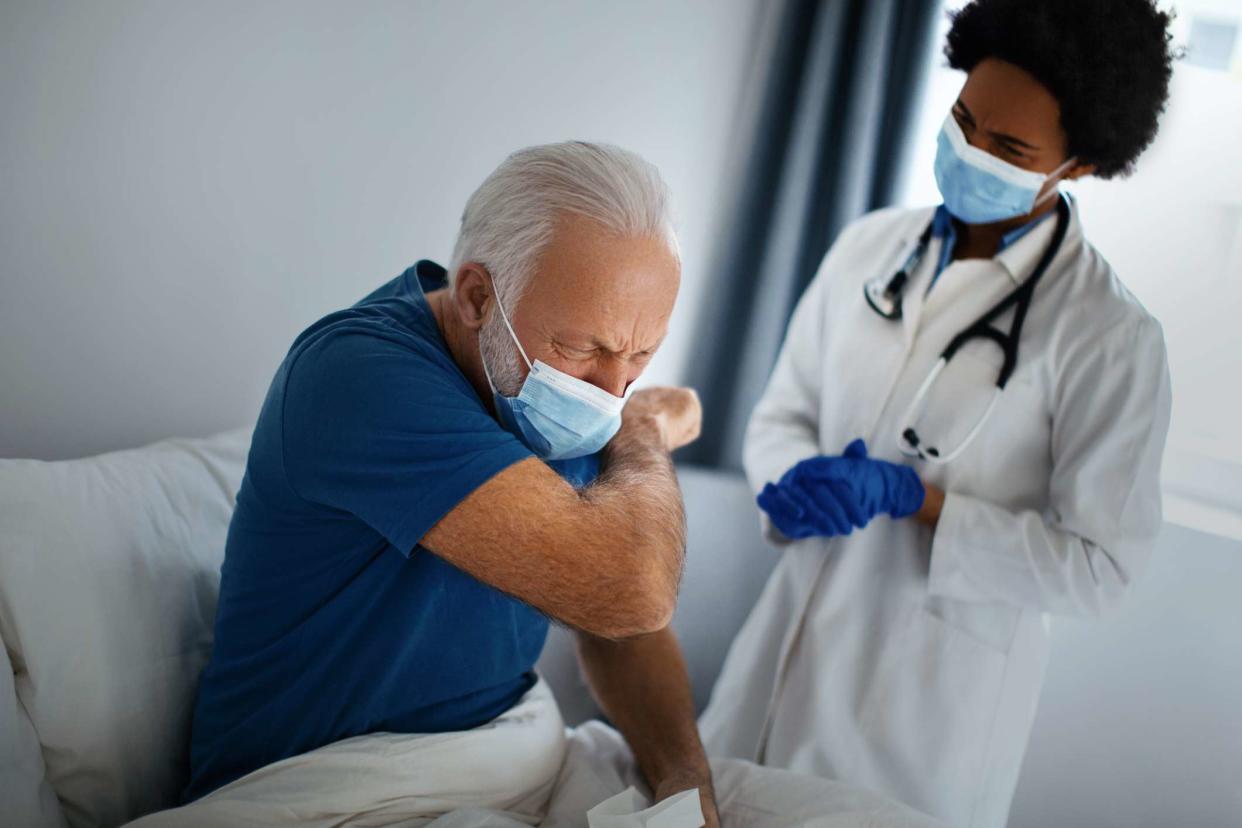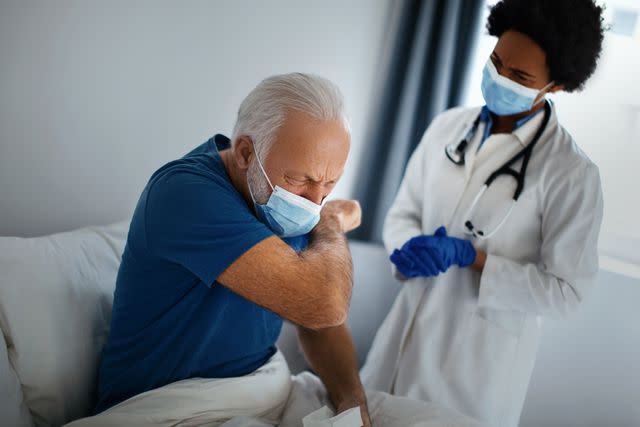What Is Pulmonary Tuberculosis?

Aja Koska / Getty Images
Medically reviewed by Brian Bezack, DO
Pulmonary tuberculosis (TB) is an infection with the tuberculosis bacterium that specifically affects the lungs. It’s likely the form of tuberculosis you’re most familiar with, although tuberculosis can affect other areas of the body.
Pulmonary TB affects nearly 1.8 billion people worldwide, though not everyone who has TB has an active infection. According to a 2016 journal article, 10% to 20% of TB cases turn into active infections.
This article will discuss pulmonary tuberculosis, including symptoms, causes, diagnosis, treatment, and prognosis.

Aja Koska / Getty Images
Pulmonary Tuberculosis Symptoms
You can have TB without symptoms. This is called a latent or inactive infection. Screening for latent TB infection is recommended for anyone at greater risk of exposure to TB.
If you have active TB, you may experience:
Chronic cough
Appetite loss
Weight loss for no apparent reason
Fever and chills
Night sweats
With pulmonary TB, your symptoms will mostly be lung-related. You may also experience:
Coughing up blood
Coughing up mucus
Related: Signs and Symptoms of TB
Causes
An airborne bacteria called Mycobacterium tuberculosis causes pulmonary tuberculosis.
You can get TB by breathing air after someone coughs or sneezes. But unlike the common cold or COVID-19, you need to have prolonged contact with the bacteria to develop the disease.
If you have a healthy immune system and contract TB, you may not experience symptoms until your immune system is weakened for some reason (you are immunocompromised). You’re more likely to develop acute symptoms if you’re immunocompromised.
Risk factors for contracting TB include:
Being in prolonged contact with someone who has TB
Living somewhere where there are high rates of TB
Working in a medical facility or with people who are at increased risk of TB
Being homeless
Being an intravenous (IV) drug user
Having human immunodeficiency virus (HIV)
Related: Causes and Risk Factors of Tuberculosis
Diagnosis
To diagnose pulmonary TB, a healthcare provider will ask you about:
Any recent exposure to someone with TB
Any recent travel to somewhere where TB is common
Your symptoms
They will also do a physical exam. If TB is likely, they will probably order testing such as blood or skin tests. A blood test is usually more accurate than a skin test. It checks for TB antibodies in the blood.
They may also test sputum (phlegm, coughed-up mucus) to see whether you have an active case of TB. A special stain and examination are done, as well as a culture (placing the sample in a medium to see if TB grows).
An X-ray or computerized tomography (CT) scan can help a healthcare provider check for signs of TB in the lungs.
Related: Testing for Tuberculosis
Treatment
If you have active TB, a healthcare provider will prescribe antibacterial treatment for several months. Different protocols may be used, and a person may have to take other medications at a specific time of day.
An antibacterial drug regimen typically used to treat TB includes:
Isoniazid (INH)
Rifampin
Pyrazinamide
Ethambutol
You may need to quarantine at home or be admitted to a hospital for two to four weeks until can no longer transmit the bacteria to others.
Treatment for TB that hasn’t yet developed into an active infection is preventative and involves taking a daily dose of isoniazid for up to nine months.
Related: How Tuberculosis Is Treated
Prognosis
With treatment, your prognosis is good, especially if you receive treatment early on. Most people see their symptoms improve within about three weeks. However, untreated TB or TB that gets treated late can be very serious and lead to complications such as permanent lung damage.
Sometimes, TB can become resistant to medication. Resistance is more likely to happen if you stop treatment early. Complications are more likely if you develop drug-resistant TB.
Pulmonary TB is more common in immunocompromised people than in the general population. And almost 1 million people with TB around the world also have HIV. They may have a harder time fighting off the disease, even with treatment. And TB symptoms tend to be much more severe for someone who is immunocompromised.
While the disease is curable and preventable, it’s still a leading cause of death worldwide, according to the World Health Organization (WHO).
Coping
The most important thing you can do when you have TB is to complete your treatment. But, unfortunately, it may take some time for symptoms to go away.
Medication side effects are also possible, and TB medication can be hard on the liver. Other medication side effects may include:
Vision problems
Dark-colored urine
Skin rash
Talk with a healthcare provider if you experience new symptoms after starting your TB treatment. They may recommend additional medication to prevent liver toxicity or switching TB medications.
Remember, TB Is Contagious
While taking medication to treat pulmonary TB, you may still be contagious for a few weeks. So, it’s important to prevent spreading the disease by avoiding close contact with others, covering your face when coughing or sneezing, and maintaining good air circulation indoors.
Summary
Pulmonary tuberculosis is a form of tuberculosis that primarily affects the lungs. You must have prolonged contact with someone with TB for them to transmit the infection to you. In addition, you’re more likely to contract TB if you have a weakened immune system. Treatment for TB is available and involves taking antibacterial medications for several months.

